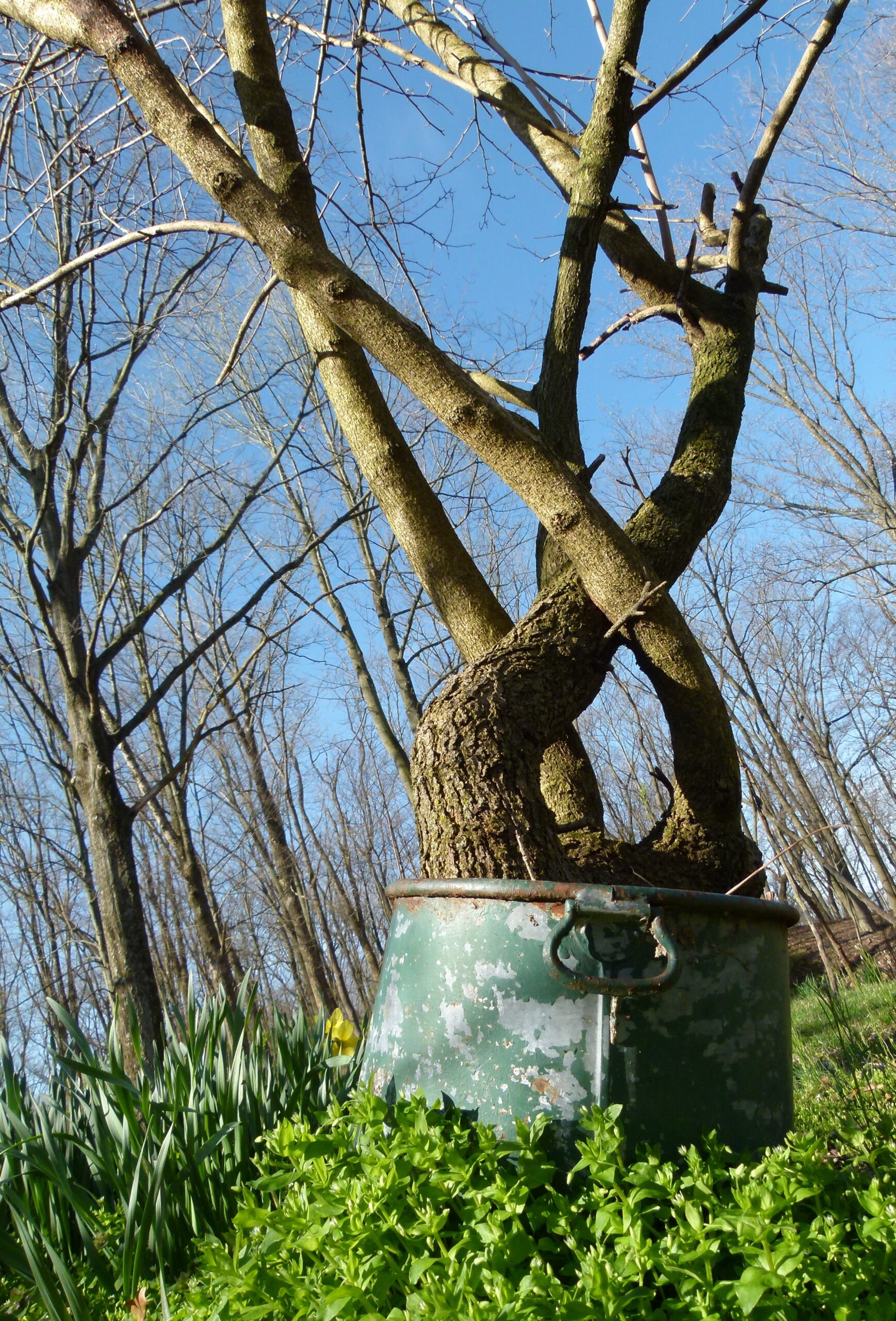
Douglassville, PA
We have a really ugly sugar maple in our front yard. Yard is a euphemism for dirt and weeds. Dirt is a euphemism for clay and rocks. Weeds is a euphemism for invasive species and exhaustion. But we love this ugly tree.
Twelve years ago, we had to have the top of the maple cut off in order to have a dying tulip poplar next to our house taken down. So the arborist pollarded the maple, leaving us with what looked like a lopped off telephone pole: a six-foot-tall trunk about a foot in diameter. Every year, the thin, scraggly branches that grow from the top of the trunk get a little thicker. Think Muppet with hair but no head. Or a three-year-old’s drawing of a tree. We call it our bonsai tree; we enjoy euphemisms. It’s as weird and ugly as you think it might be.
Years ago when we rented the house to idiots because we were young and stupid and idiots ourselves, one of the renters tried to chop it down. (It really does offend.) The gouges have scarred over, but the maple still holds the act against us—that, and the pollarding—as it should.
The base is rotting. So badly that you can see through the tree. Where the trunk should be growing into the ground, there is instead, a tunnel for the chipmunks that torment our lab and pointer. My mom felt the tunnel empty and longing, so she bought a cement rabbit to place in the passageway to make the tree less mournful. We call the rabbit Toby. The chipmunks stand on Toby’s head. Bonsai’s feelings about Toby have yet to be revealed.

Each spring, the stubborn beast buds out, waving maple leaves the color of burnished metals. Even without sun, they’re electric—a kind of jeweled copper that appears reddish one moment, then gold, then green. The birds pause on the branches in between visiting the feeders and plaguing the pointer, so it’s lousy with cardinals and chickadees, woodpeckers and titmice, doves and the occasional blue bird. Ugly indeed.
*
The maple is one of many abominable trees on our property. Twenty years ago, when we bought this place—a log cabin on seven wooded acres—the owner made a separate phone call to admit that the hemlocks are dying. Hemlocks aren’t supposed to be this far south, but we have a weird little pocket of cold, rugged, rocky, ravine-y Pennsylvania land that mimics land farther north. So the hemlocks are here, but the woolly adelgid have done a number on them. We’ve had arborists treat the trees, and some hemlocks have held on. These are not regal pines. These are spindly, gangly creatures with dying or missing branches. One hemlock in our yard has no branches in the middle of it, as if it’s wearing some hideous girdle. We contemplate cutting it down. Every year I read about new treatments, new biocontrols, and every year, the trees get a little uglier.
And every year brash green neons form at the ends of each branch. Tiny teacup pinecones emerge, and I hope a new sapling will emerge too, and every year I’m wrong, but the originals are steadfast, just as stubborn as their maple cousin.
Sunlight filters through the sentients, and light changes with waving branches so that the woods are a cathedral—then a tower, next a temple, a shrine. A busted-up place of worship to be sure, with missing mortar and cracked stained glass, but a holy place all the same.
*
Last summer, a windstorm felled a maple, which nearly split a native dogwood in half. As we chainsawed the lost maple into firewood, we mourned the dogwood. It still stood, but eighteen inches from the ground, its trunk bent almost ninety degrees, and the remaining tree grew nearly parallel to the ground. We assumed that this year, it would be dead. But it’s been inspired by Bonsai and Girdle. It photosynthesizes tenacity. Though the trunk’s angle has only improved to about 45 degrees, half the tree not only leafed out, but had more blooms than ever before. Blazing blossoms waving against dark woods, each flower four petals of cream and doggedness.
*
There’s also the crooked mulberry tree that grows out of a bottomless tin pail. The ash trees, decimated by the emerald ash borer. The towering dead red oak that’s too dangerous for us to take down: rich with MC Escher-like fungus, woodpeckers, flying squirrels, screech owls.
*
One of the dogwood branches is dying. Hemlock hulls rain down on us, and the maple’s tunnel is wider than ever. But life fights. Leaves reach for light. Pine cones bulge. Acorns roll.
Onward, they endure, persevere, these earnest, ugly trees.
Heather E. Goodman’s writing has been published in The Sun, The Christian Science Monitor, The Boston Globe, and the Chicago Tribune, where her story won the Nelson Algren Award. She teaches high school students and lives along a creek in Pennsylvania with her partner Paul and pups.




